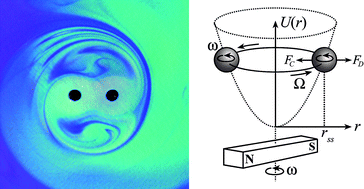The dependence between forces and dissipation rates mediating dynamic self-assembly†
Abstract
Dynamic

- This article is part of the themed collection: Self-assembly
* Corresponding authors
a
Department of Chemical and Biological Engineering, 2145 Sheridan Road, Evanston, Illinois 60208, USA
E-mail:
grzybor@northwestern.edu
b Depertment of Chemistry Northwestern University, 2145 Sheridan Road, Evanston, Illinois 60208, USA
c Institute of Molecular Physics, Polish Academy of Sciences, Smoluchowskiego 17/19, 60-179 Poznań, Poland
Dynamic

 Please wait while we load your content...
Something went wrong. Try again?
Please wait while we load your content...
Something went wrong. Try again?
K. V. Tretiakov, K. J. M. Bishop and B. A. Grzybowski, Soft Matter, 2009, 5, 1279 DOI: 10.1039/B811254A
To request permission to reproduce material from this article, please go to the Copyright Clearance Center request page.
If you are an author contributing to an RSC publication, you do not need to request permission provided correct acknowledgement is given.
If you are the author of this article, you do not need to request permission to reproduce figures and diagrams provided correct acknowledgement is given. If you want to reproduce the whole article in a third-party publication (excluding your thesis/dissertation for which permission is not required) please go to the Copyright Clearance Center request page.
Read more about how to correctly acknowledge RSC content.
 Fetching data from CrossRef.
Fetching data from CrossRef.
This may take some time to load.
Loading related content
